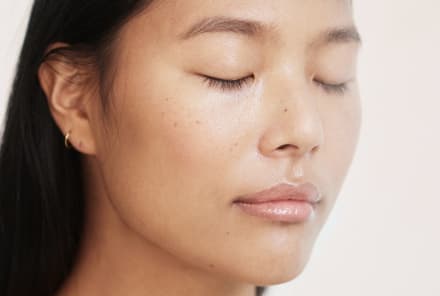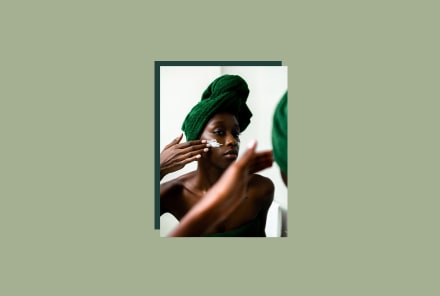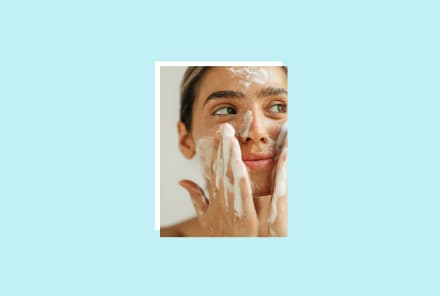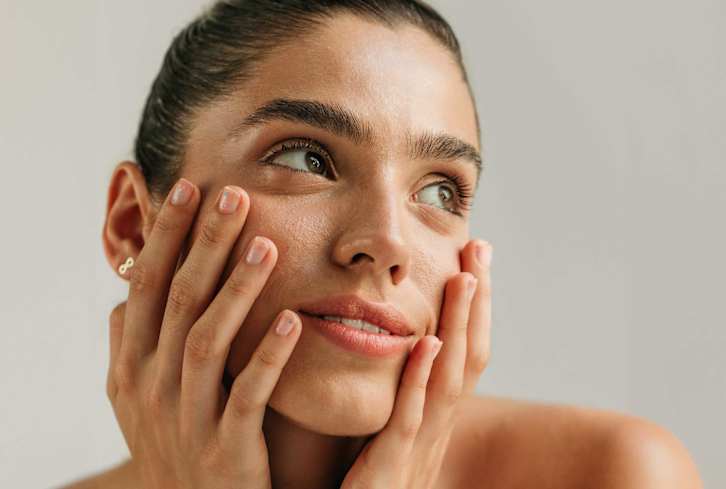Advertisement
3 Underrated Tips To Actually Quench Thirsty Skin, Straight From A Derm

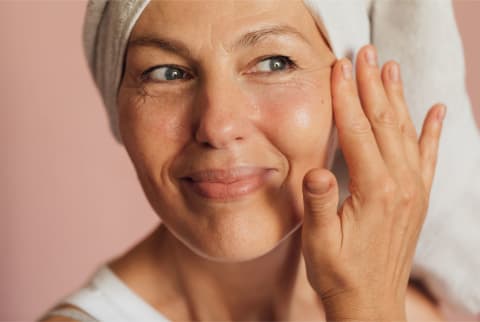
You need to hydrate your skin. Improper hydration can lead to a compromised skin barrier over time, which paves the way for irritation and premature aging (think sagging and wrinkles). I repeat: Make skin moisture priority No. 1. Sounds easy enough, right?
You'd actually be surprised by how many people struggle with the simple task—self very much included! This time of year, my complexion becomes perpetually thirsty, eagerly drinking up my serums and creams only to appear dull and withered mere hours later.
I know I'm not the only member of the Dehydrated Skin Club, so I asked board-certified dermatologist Lindsey Zubritsky, M.D., FAAD, for a quick skin hydration crash course. Ahead, find her top three tips to *actually* plump your skin with moisture:
Seek a balance of humectants, emollients, and occlusives
"When choosing a moisturizer, look for products with multiple, evidence-based ingredients that are known to hydrate all levels of the skin," Zubritsky shares. Essentially: Look for a healthy blend of humectants, emollients, and occlusives.
See, each ingredient category hydrates the skin in different ways. Humectants attract moisture, emollients fill in the cracks with lipids, and occlusives provide a barrier to make sure that precious hydration doesn't seep right out.
Products are usually formulated with a combination of the three—well, unless you're putting a raw ingredient on your skin, like a hyaluronic acid serum—but it's an important balance to keep in mind nonetheless.
If you only use occlusive-heavy ointments (say, a slugging balm) without any humectants underneath, you likely won't see hydrated results. Occlusives can't trap hydration inside if there's no water for them to trap! So, make sure your moisturizer includes humectants (hyaluronic acid, glycerin, aloe, etc.) in addition to occlusive oils and butters.
"Other ingredients that help to hydrate the skin are natural moisturizing factors, including amino acids and electrolytes, and essential lipids, which hydrate and help smooth skin's surface," says Zubritsky. Many of these fall into the emollient category if you'd like to keep up with the ingredient organization.
Switch up your moisturizer
It's a familiar scenario: You become so enamored with your moisturizer that you forget to swap it out when cooler weather comes around. I've certainly been there! But Zubritsky encourages flexibility with your skin care routine—a summer-friendly, lightweight gel just won't cut it in the dead of winter.
"During the winter, there's less humidity in the air, so skin tends to dry out," she explains. "I recommend switching to a heavier, creamy moisturizer during the colder months, then swapping back to a lighter, gel-based moisturizer in the summer."
If you can't bear the thought of parting with your beloved face lotion, you can always use different options from the same brand. If a brand offers multiple products based on skin type, try snagging the formula suited for drier complexions, even if your skin type isn't necessarily dry.
For example, "I love the Neutrogena Hydro Boost Water Gel with hyaluronic acid for those with oily or combination skin and recommend the Neutrogena Hydro Boost Water Cream for those with drier skin," Zubritsky offers.
How can you tell if you need to switch things up? Listen to your skin: If it feels tight or dry even after applying, that's a surefire sign your moisturizer isn't performing.
"Also, if you've been applying your moisturizer like you should but you still experience dryness and flakiness—it could be the wrong moisturizer for your skin," Zubritsky adds.
Apply on damp skin
A final note: "Always apply moisturizers on damp skin," says Zubritsky. "Applying moisturizers on damp skin is the best and most effective way to hydrate your skin. This method helps to lock in moisture by increasing the water content to the skin."
Remember that the humectants, like hyaluronic acid and glycerin, in your moisturizers are water-loving, so it helps to give them the water they need to do their job properly. The occlusives will also trap any water lingering on your skin, which leads to an even plumper, more hydrated complexion.
The only caveat to keep in mind is that if you use unstable actives (a retinol or vitamin C serum, perhaps), you'll want to apply those on clean, dry skin before following up with moisturizer. But you can always re-dampen your skin with a mist once those actives dry down—here's how long experts say you should wait in between steps.
The takeaway
To be clear, hydrating your skin involves way more than topical products. Proper cleansing etiquette, high-tech tools (like humidifiers), and a well-balanced diet can all send your skin some much-needed TLC.
"It's important that to achieve hydrated and healthy skin you focus on maintaining a strong skin barrier," Zubritsky adds, and there's much you can do to protect your skin's first line of defense. If you're hungry (or shall I say thirsty?) for more information, find a full list here!
Watch Next
Enjoy some of our favorite clips from classes
Enjoy some of our favorite clips from classes
What Is Meditation?
Mindfulness/Spirituality | Light Watkins
Box Breathing
Mindfulness/Spirituality | Gwen Dittmar
What Breathwork Can Address
Mindfulness/Spirituality | Gwen Dittmar
The 8 Limbs of Yoga - What is Asana?
Yoga | Caley Alyssa
Two Standing Postures to Open Up Tight Hips
Yoga | Caley Alyssa
How Plants Can Optimize Athletic Performance
Nutrition | Rich Roll
What to Eat Before a Workout
Nutrition | Rich Roll
How Ayurveda Helps Us Navigate Modern Life
Nutrition | Sahara Rose
Messages About Love & Relationships
Love & Relationships | Esther Perel
Love Languages
Love & Relationships | Esther Perel





